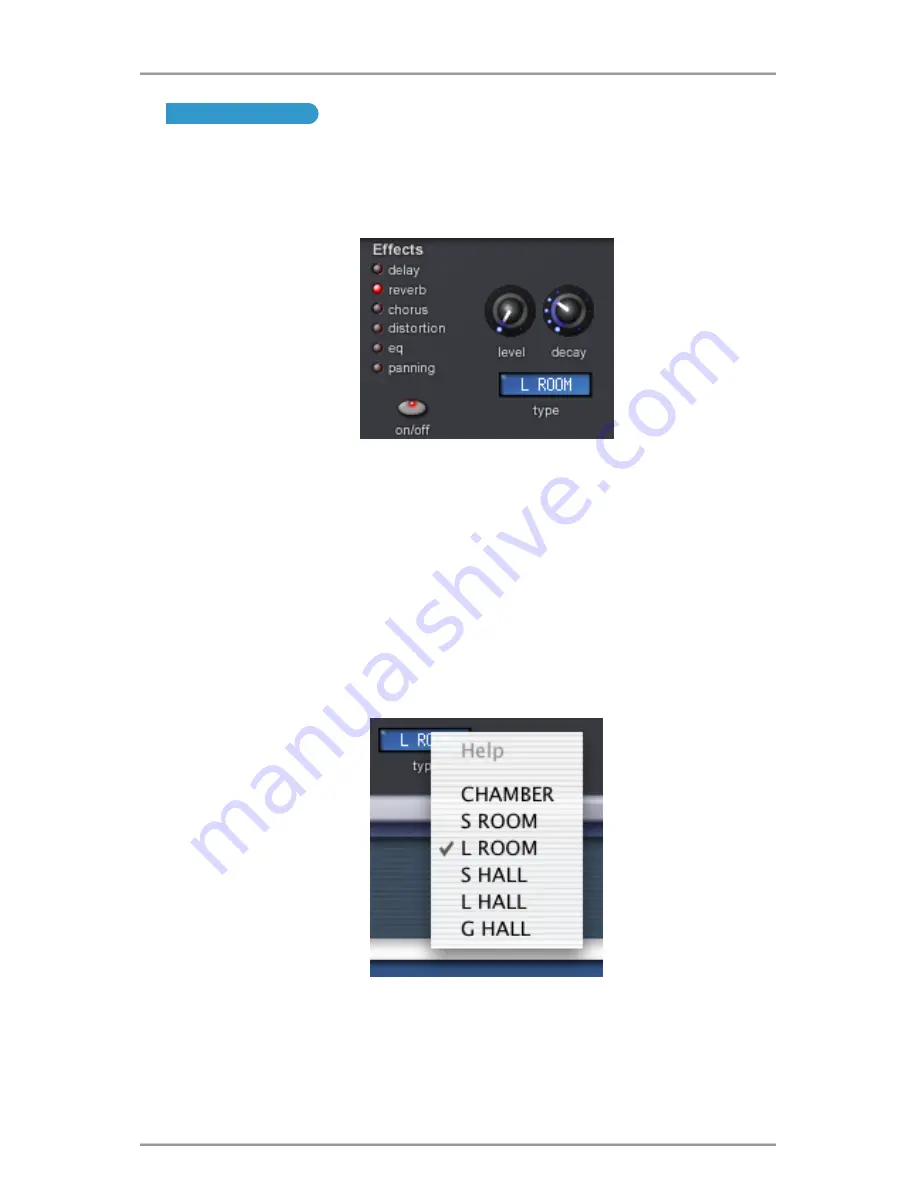
Reverb
Reverb
The Reverb Effect is an electronic simulation of a room or building that is acoustically reflective.
When a sound is made in a room or large building, there are sound reflections from all
directions. Unlike echo where you hear each reflection individually, the reflections in a
reverberant space ‘smudge’ together to create the reverb sound we are familiar with. When a
reverb effect is applied, it is these ‘smudged’ reflections of the sound that are being added.
L E V E L K n o b
Sets the amount of signal going to the reverb. As the control is turned clockwise, so you will
hear more reverb.
DECAY Knob
This sets the time it takes for the Reverb to die away after the original sound has decayed. Very
acoustically reflective rooms (like those with metal or glass surfaces) tend to have long decay
times and non-reflective rooms have short ones.
TYPE Menu
Different types of rooms and halls have different acoustics and, therefore, different reverb
characteristics. The V-Station’s reverb processor features six different reverb types. These
range from a small room to a large hall:
Experiment with different types of reverb, noting how different ‘rooms’ affect the acoustic
properties of the sound.
43
MAIN panel / Operation
















































